

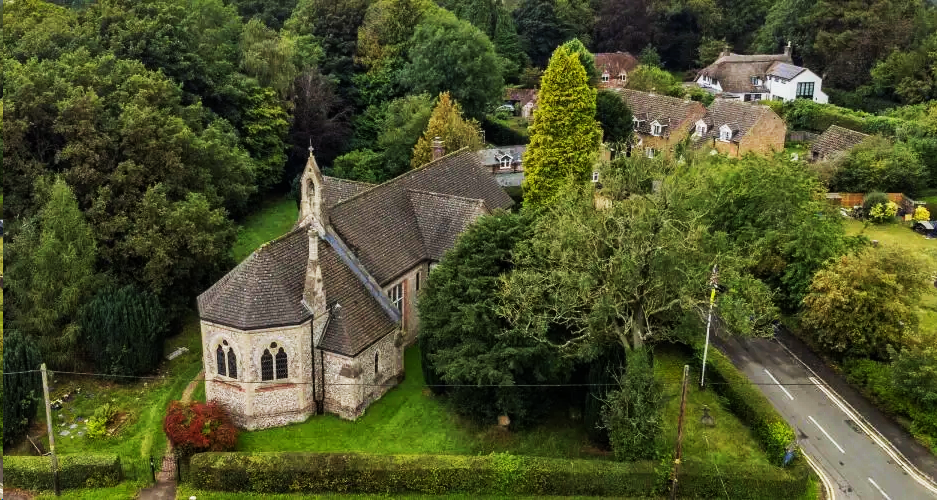
Acknowledgements:-
Collated by Rosemary Gabbitas
Prof. Michael Eastham
A History of the parish Church of St. John the Evangelist (Revised 1994).
Joan West
A Chiltern Village School against all odds (2000), laceygreenhistory.com.
Members of the Village History Group.
Local wealthy landowners lobbied in Parliament for the Enclosure of the area. They stated that if the Act was passed, "A Chapel will be erected at Lacey Green" (See Enclosures)
The Revd. Richard Meade, Rector of Horsenden and Perpetual Curate of Princes Risborough, stated that
"Much good may probably be done for the spiritual improvement of that almost heathen district."
The Enclosures Commissioners made an allotment of land on which to build a Chapel and graveyard.
The cost was to be effected by the benefaction of the nobility and gentry (see Armorial window).
A public appeal raised £2.200,
The bounty was originally funded by the annates monies: a tenth of the income each year traditionally paid by English clergy to the pope until the Reformation and thereafter to the Crown - Henry VIII.
Queen Anne's Bounty was a scheme established in 1704 to use this money to augment the incomes of the poorer clergy of the Church of England
£200 from Revd. Meade and £460 from the Society for Promoting the Enlargement and Building of Churches and Chapels.
(For more details see Church Guide Book pages 1-5 - description of the church building p 3 - 5)
Tender to build the church was accepted by the Trustees at a Meeting at the Red Lion in High Wycombe.
Builder: Richard Jordan of Amersham.
Trustees: Sir Scrope Bernard Morland, John Grubb Esq., Rev. Isaac King, Sir William Young.
Building started on May 1st. finished 25th May 1825 Architect J. Chadley. It was considered a Chapel of Ease to St. Mary's Church, Princes Risborough in that people were saved the long walk to St. Mary's.
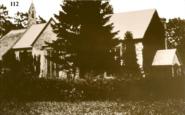
Note the absence of the domed front, and boiler chimney - yet to be added
July 3rd morning: Building consecrated by Hon. George Pelham, Lord Bishop of Lincoln.
July 3rd evening: Preacher Revd. Richard Lendon, Prebendary of St. Paul's Cathedral baptised 19 babies and young children.
Richard Meade appointed Perpetual Curate.
The curacy continued to be in the gift of the Perpetual Curate of Princes Risborough.
Churchwarden -Joshua Dell.
Major landowners increased the size of their farms,
small farmers were given land near their houses.
Cottagers with no land could no longer use the common - they did not take this kindly.
Charles William Hughes (Corpus Christi College Cambridge) appointed Perpetual Curate.
Churchwardens were to change several times during his tenure
1828 Thomas Hawes
1829 Edward Anderson
1830 - 1831 James Grace
1832 - 1833 James Grace, Richard Avery
Churchwardens:
1834 William Barrett, Thomas Randal
1835 William Barrett, Thomas Bristowe
1836 William Barett, Edward Anderson
1837-1838 William Barrett
1839-1840 William Barrett, Charles Brown
1842 William Barrett
Appointment of Rev. Charles Lendon M.A. (Trinity College Cambridge), as Curate of Lacey Green.
Death of Rev. Richard Meade, aged 61. N.B. a family tree from Lipscombe's book (see 1847) shows that the Meades were related to the Stone Family of Grimsdyke
Entire County of Buckinghamshire transferred from the Diocese of Lincoln to the newly extended Diocese of Oxford.
George Lipscomb's History of the County of Buckinghamshire shows the population of the Upper Hamlets to have been:-
Loosley Row 68 houses 164 males 169 females Total 333 inhabitants
Lacey Green 66 houses 141 males 146 females Total 287 inhabitants
Speen 63 houses 162 males 157 females Total 319 inhabitants
Revd. William T. Burgess appointed Vicar. (see also Loosley House 1850's
Vicarage erected, (then known as the Parsonage). Stated to be a large handsome house in Elizabethan style, surrounded by 2 acres of pleasure gardens.

Incumbent William T. Burgess. He and his wife Mary Ann had 8 children. They lived at Loosley House while the Vicarage was being built.
In 1881, William became Rector of Stretton Sugwas, Herefordshire.
Parish formed out of part of the Princes Risborough Parish. Continued to be known as a Parochial (Parish) Chapel until 1868. It was at this time that the new Parsonage was built with money from Queen Ann's Bounty.
Revd. Burgess became one of the first trustees of the Emma Grace Foundation, which endowed Loosley Row and Speen Schools.
St .lohn's officially became a church, by direction of the Bishop of Oxford. Title of the Minister was changed from Perpetual Curate to Vicar.
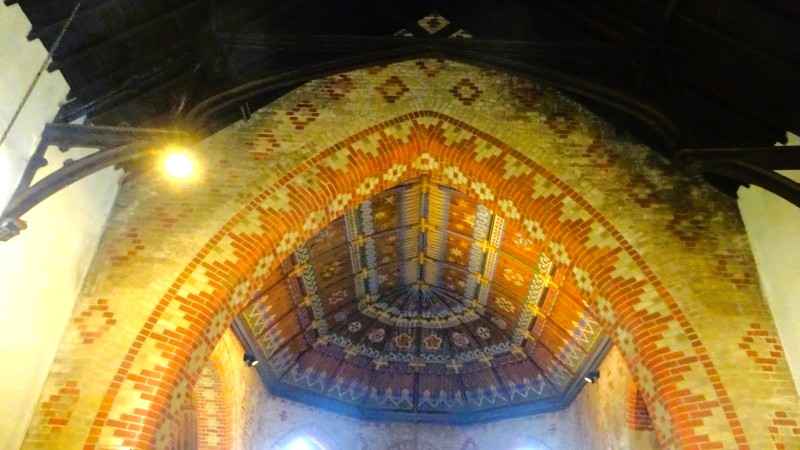
Architect J. P. Seddon (who had architected the new Vicarage). This involved the removal of several galleries which were considered to be obstructing the architectural proportions of the church. Mr Seddon was well known for the rather "busy" patterning of his brickwork, and for the highly decorative paintwork (in Victorian- Tudor style), such as used for the ceiling of his polygonal chancel. His steep chancel arch seems to have caused the bricklayers some trouble. We learn from church records that, at the first attempt, the whole structure collapsed with a terrifying rumble in the night.
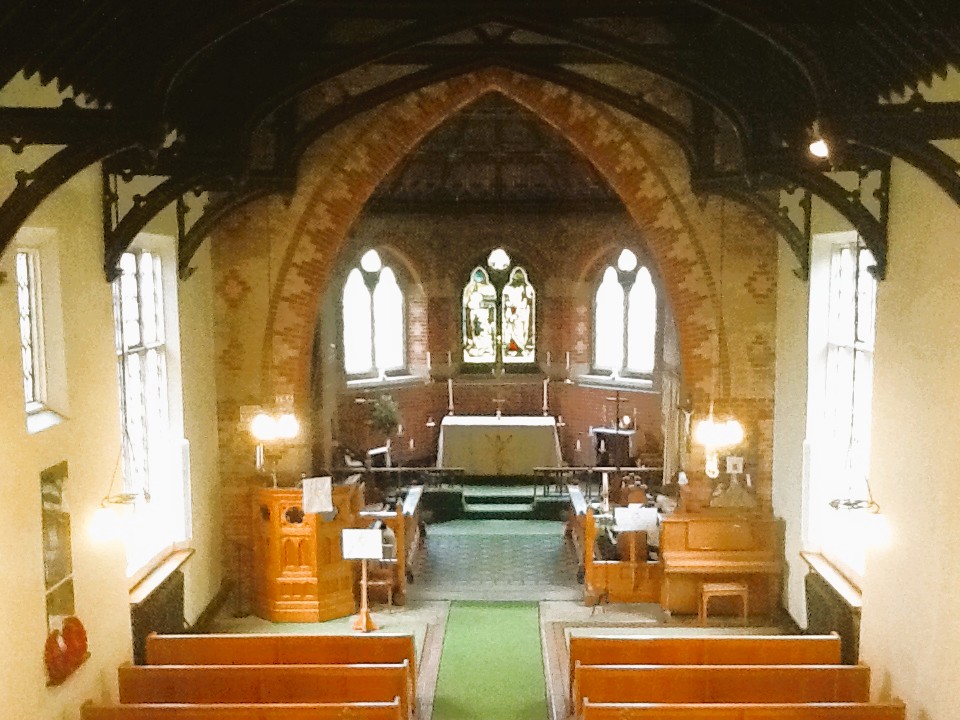
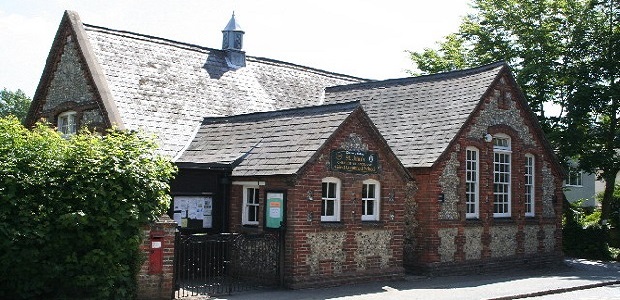
The present school commenced. It was built on land conveyed by Charles Brown of Stocken Farm to the Vicar and Churchwardens of Lacey Green Chapel. There had previously been a schoolteacher (Mary Ann Floyd), which suggests that a schoolroom must have been somewhere in Lacey Green. The site of this has never been verified. It may have been on the right of the lane to the right of the Black Horse PH which leads down to Floyd's Farm.
The first children admitted to the school were said to be fair in reading and spelling, but quite deficient in writing, arithmetic, tables, scriptures and Catechism
"Lace girls" were allowed to be off school to complete work. Boys were often away in the summer, helping with the harvest.
Miss Burrows took over the School. The infants were encouraged to go to Speen or Loosley Row Schools, and the older children to Lacey Green.
Sarah Burman became a teacher at the School.
Inspector's Report stated that the Arithmetic at the School was:
"Good for Nothing".
The Misses Burgess (Vicar's daughters), came to school to hear the children sing. One of them donated and played the Samuel Green organ in the gallery at church, now known as the Upper Room.
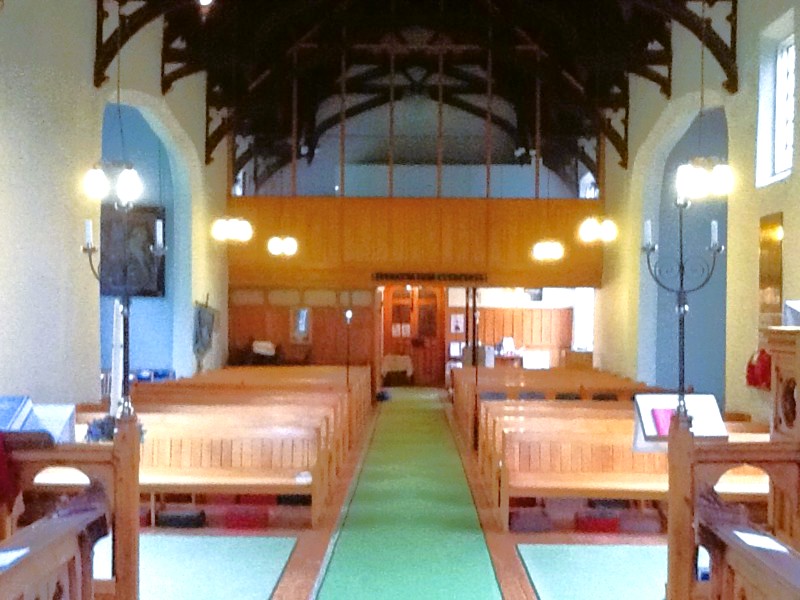
During this year, Revd. Burgess died. His children had the stained glass windows showing the "Call of St Peter" installed over the altar.
A great deal is known about the organ, which is an important instrument and is covered in another publication. However, it is not known where it was originally situated. Maybe Hampden House.
The 1880 Elementary Education Act (The Mundella Act), obliged local authorities to make byelaws requiring school attendance.
Oct 18th Diocesan Inspection stated that
"The lower division is somewhat slow in responding, although able to repeat Hymns and private prayers. Standard 4 very good."
Annie Elizabeth Newberry commenced teaching duties.
Report stated that
"the School was steadily advancing"
School reports.
"Complaints made about the irregularity of attendance.
Great improvement in Religious knowledge".
Vicar - William Kelly
Mr Worthing began as teacher, but lasted less than a year.
Infants classroom only 12 square feet. Plans for enlargement of school needed.
Mr and Mrs Henton began teaching duties. Inspectors reported that
"the school had improved most creditably under Mr and Mrs Henton".
Infants classroom enlarged to accommodate 30 children. Mr Forrest (from Grimsdyke) was paying for a number of children. There were more than 85 children in the school.
15th May - children given a holiday to go round with their May Garlands. Frequent absentees reported to the School Attendance Committee.
27th July - children given a holiday to attend Flower Show and Cricket Match. At this event 3 men were killed by lightning.
Miss Mason inspected the orphan children who are "Boarded out" in the village.
Master resigned - replaced by W. H. Hallewell and Mrs. Hallewell, who left in 1894.
Report that more water closets were needed and should be cleaned more regularly.
There were 14 scholars at the evening Continuation School.
Mr and Mrs Alfred Brown took over school. Staff were now, Mr and Mrs Brown, a Pupil teacher and a Monitress.
Children marched to church for Ash Wednesday service.
April - Building work means children are all in one classroom. Not even room to move about.
Revd and Mrs Robson and Revd. Bousefield(1877) visited school.
Drought. Children had to fetch water from Saunderton or Holly Bush Farm.
N.B. Throughout all this period, children were often absent from school due to snow or bad weather. They were also absent for the harvest, picking dandelions, picking up acorns and fetching dead wood. There were also many outbreaks of childhood diseases, and cases of TB. Many holidays had to be given for Chapel teas.
By 1900, virtually all the woodland in the village had been felled for chair making.
Vicar William Robson.
Revd. Robson formed the Church Boys Brigade. He was Trustee and Manager of St. Johns School.
Miles Marshall (local historian) reported that Robson's story was a sad one.
He had an accident. lt is said that he was thrown off a tram. This led to him losing his voice, so that the congregation could not understand him when he preached. The children called him "Old Tin Ribs" (he was long and thin).
He acquired a considerable amount of property around Lacey Green, including an area in Church Lane (now Hambye Close) on which was built an Indoor tennis court for his wife. Nevertheless, his wife left him to return to Cheltenham, and his congregation dwindled away to almost nothing.
He was looked after by Miss Nancy Hawes, the church organist, and a pupil teacher at the school. ln the 1911 census he was living in Lacey Green with 2 servants. In 1922 he moved to Cheltenham.
No list has been found of Churchwardens, but it is known that among them were Peter Tyler Floyd and Eldred Tilbury.
Mr Brown left the school. A.E.Hawes (Nancy) could not be recognised as a teacher until she had more experience. Nancy continued at the school for many years, and was a great favourite with the children.
William Roebuck took over at the school, to be replaced by Albert Phillips and Miss Edith Crook (with no experience in teaching) in 1904.
Miss Mabel Janes started teaching on Oct 24th. She continued at the school until around 1950. She was strict, but a good teacher. The children called her "pouty". In 1906 she attended a course in Aylesbury leaving the Master to teach a class of 86.
Oct 11th - dedication of East Window to former Vicar, William Johnston Burgess. It depicts "The charge of our Lord to St. Peter (John 21, verse 15)"
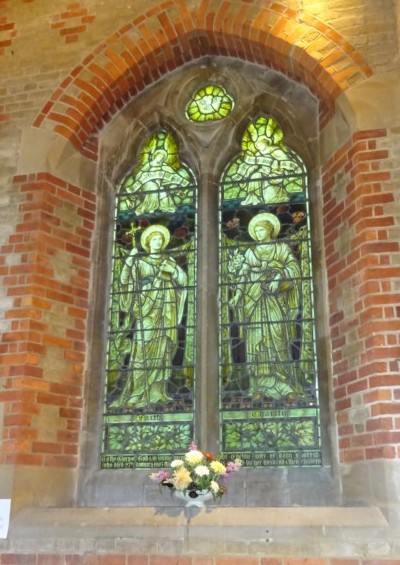
In this year also the South stained glass widow, depicting Faith and Charity was erected to the memory of Mrs Evelyn Forrest of Grimsdyke. She had tried to help those villagers who were impoverished by decline in the lace trade. (See work of Rosemary Mortham).
On Empire Day the children attended church. This practice continued until the 1950's. Mr Adkins from the "Band of Hope", gave a talk in the school about alcoholism.
Boys cricket team was doing well. Had to walk to surrounding villages to play matches. Football team also formed.
School Master resigned. Replaced by George Wiltshire in 1909.
Eye testing in school began. In 1910 they were all weighed and measured. Physical exercises were begun in school.
Total pupils 94. At long last, school reports were good
"Subjects have been well taught and the work reaches a high standard".
H.C. Avery began duties at the school. He was liked by the children, and kept in touch by postcards and visits, when he was sent to fight in the First World War. Replaced in 1914 by Fanny Palmer.
The Great War (First World War).
Many men from Lacy Green enlisted, and there was a great loss of life.
School boys began a garden for the War Effort. This was on the church side of Main Road, within the loop of Church Lane.
Miss Janes passed her Teacher's Examination. Salary rose from £9 per year (which it had been for 18 years) to £12 per year.
Many children in school found to be verminous.
Infants classroom taken over by the military, guarding an aeroplane which had come down in the field next to the school in a snowstorm.
Nov 19th - Armistice Day. Children very excited. No holiday given, but there was a procession through the village, with boys dressed as soldiers and girls as nurses.
School was closed due to a major flu epidemic which occurred after the war. This became a pandemic and killed more people worldwide than the war.
Winter weather very severe. lnk frozen in ink wells.
Kathleen Brown from The Crown P.H. passed the Scholarship to High Wycombe Grammar School - the first pupil ever to do so.
Fanny Palmer resigned, as Mr Avery was returning.
Children were practising Country Dancing, and had their photo taken. (See Joan West's book)
Brass memorial plaque in memory of those who died in the 1st World War was erected to the right of the lectern.
Money raised by Voluntary Subscription.
Mr Avery resigned. Kate Floyd Gray took over.
The staff now consisted of Miss Kate Gray, Miss Mabel Janes, Miss Ann (Nancy) Hawes.
Revd. Richard Gee became Vicar. Previously, he had been a Missionary in India. He used to let the school children try on the costumes which he had brought back.
As a child at school, Douglas Brett remembers that his mother became first the gardener and later a Housekeeper at the Vicarage. The vicar's wife persuaded her to send her older son to Dr. Barnardos', but when they wanted to send him to Australia, she refused to send him back.
South Transept fitted out as a side chapel.
The Royal Arms of George IV were moved from the East to the West wall of the transept.
Oscar C. Morton became Vicar
Upgrade of heating system involving raising the height of the chimney, cutting through the North Wall, creating a new entrance to the Heating Chamber, and sealing the existing trap door.
Private gift - Donation of Priest's Vestry.
Revd. Richard T. Sharp became Vicar
Installation of new altar rails to replace the existing "pitch and pine " rails, in memory of Richard Gee.
Gift of statue of the Madonna and child after (Murillo) for the Lady Chapel. Cost £9 (=£780 in 2025)(An Objection raised, but later withdrawn).
Teak crucifix erected at the entrance to the New Graveyard. Funds by public subscription.
Conveyance of additional land for extra burial ground. Gifted by the Vicar and Governors of Queen Ann's Bounty, Harold E Carter of Grimsdyke and Barclays Bank for the Ecclesiastical Commissioners'.
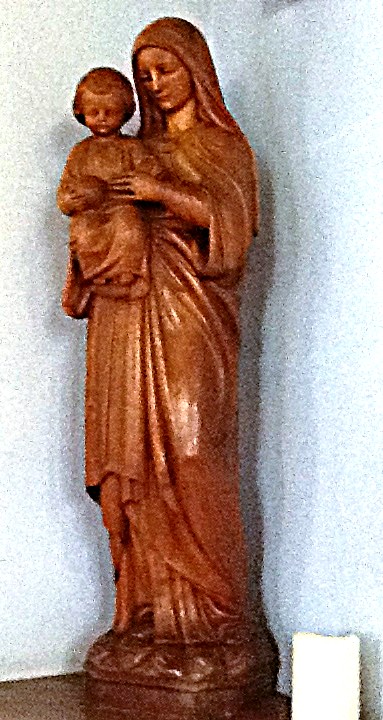
Revd John Eric Steward became Vicar(Member of The Oxford Movement - High Church)
Revd. Steward had been a Missionary in Africa. He took with him his iron framed piano, and on his return donated it to the church. It ls believed that he also gave the figures in the Christmas Crib.
He was a popular vicar except amongst those whose land was taken to build new council houses at Greenlands, which he had supported.
Gift of silver candlesticks to commemorate the devoted services of Miss Nancy Hawes, who had played the organ since 1902. At the beginning of her time, it had been hand pumped by the choirboys. She would show them when to pump by dropping her handkerchief.
Florence Gurney became Head Teacher. She and her husband were the last to live in the Schoolhouse in Pink Road. This was built with money obtained from the sale of Loosley Row School.
There were less than 50 pupils in the school, and "Flo" (Miss Janes having recently retired) taught them all in one room except the Infants, whom were taught by the much loved Miss Jarvis. "Flo" had a very short temper. Perhaps that was not surprising,
Gift of £500 to restore and improve the organ.
Work by Kiftsgate Davison, now considered to have been unfortunate.
Teak doors added to the West porch - local donation. Since refinished by Gordon Gray.
Wooden panels installed for choir vestry to replace shabby curtains.
Gift of Andrew Oliver who was unable to achieve a faculty to have them sound-proofed.
Oak gates installed at entrance to churchyard in memory of Fred Martin - Churchwarden.
Voluntary subscriptions raise £60.
Stanley Keene Vicar.
Mr M. Knott and Mr. S. Gomme - Churchwardens
Mr Knott and the Vicar discovered a James 1st. chalice of 1615, of which there was no record.
Hester Clark Jewellers valued this at £600 and it was deposited in the bank for safe keeping.
The PCC agreed to sell the church organ, which, they said, was an embarrassment. After extensive advertising there were no potential buyers.
New part of school built at the rear of the old building. The West's (Stocken farm) gave land to extend the playground.
New lights installed made by the Foundry.
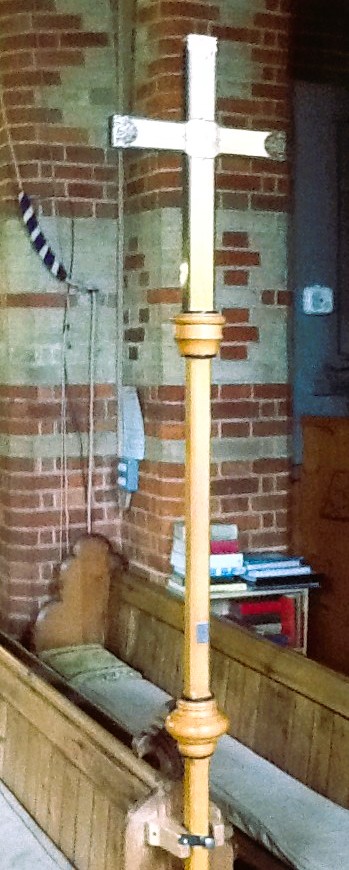
Mr David Chalkley and Mr Sam Gomme - Churchwardens.
Mr. Chalkley and Mr. Douglas Tilbury - Churchwardens
150th. Anniversary.
Processional Cross donated by Andrew Oliver.
Also altar frontal by Doris Oliver
and lace for altar cloth by Rosemary Oliver.
Bernard P. Houghton Vicar.
Approx 1970 Douglas Anthony became Head Master. He was keen on Music and Sport.
150th. Anniversary.
Outer porch door installed. Money raised by public appeal £586.
Gift of Processional Cross by Andrew Oliver,
altar frontal by Doris Oliver and
hand made lace altar cloth by Rosemary Oliver
Mr Chalkley and Mrs. Mary Mines - Churchwardens
Churchwardens - Mary Mines and Douglas Tilbury.
Replastering of large area of the North wall - a gift from Mr. G. N. Mobbs (- later Sir Nigel, Lord Lieutenant).
Retiling roof - a gift from Mrs. Waite in memory of her husband.
Interregnum.
Apparrently the newly appointed vicar had collapsed and dies after running for a train.
Peter Viney acted as non stipendiary priest.
Raymond Maynard Vicar.
Soon after he arrived he was observed by Douglas Tilbury burning a large amount of church records, (including photos of all previous Vicars), in the Vicarage Garden, however...
He lodged many of the record books in the County Records Office in Aylesbury in 1983:-
1. Register of Baptisms July 1825 - June 1892
2. Register of Baptisms June 1892 - May 1977
3. Register of Marriages Aug 1851 - Sept. 1972
4. Register of Burials Oct 1825 - June 1982
5. Register of Baptisms 2 Banns Aug 1851 - July 1938
Mrs Gaynor Newbold - Head Teacher.
New pews installed in light oak, and old deal pews scrapped. Subsequently the new pews, which had come from a school chapel were found to be very uncomfortable.
Vestry walls, choir stalls, pulpit and other wooden parts of the church were stripped and refinished in a lighter colour.
Additional parish records lodged at Bucks Records Office by Raymond Maynard
1. Services 1854 - 1878 3 volumes.
Peter R. L. Hale Vicar.
200th Anniversary of the organ marked with a musical play, "ln Tuneful Accord" by Elizabeth Hale.
New flooring fitted. Initials of donor marked on floor near pew ends.
Gallery was turned into "The Upper Room". Designed by Mabbitts of Essex, and dedicated on July 3rd, the Church's Anniversary.
Steve Coleman - Headmaster. The school was thriving and became very popular with parents.
Richard D. S. Cainke Vicar.
Sound System installed. ? ? ?
New Village Hall also constructed. Money from the Heritage Lottery Fund.
School Reunion and new garden made. Both opened by Connie Baker - oldest village resident and an old pupil of the school. Church service at midnight to mark the occasion.
Paul de Wolf- Head teacher. After him came a lady, but l can't remember her name. She died of cancer.

Denise Critchell: Vicar.
2nd World War Memorial plaque installed with the repositioned 1st World War Memorial on the North Wall.
Canon Tony Bundock - House for Duty.
During this period, Mr Newton became Head Teacher.
Clavinova (piano) available for more modern music such as that used in the All Age Worship service (first Sunday of each month).
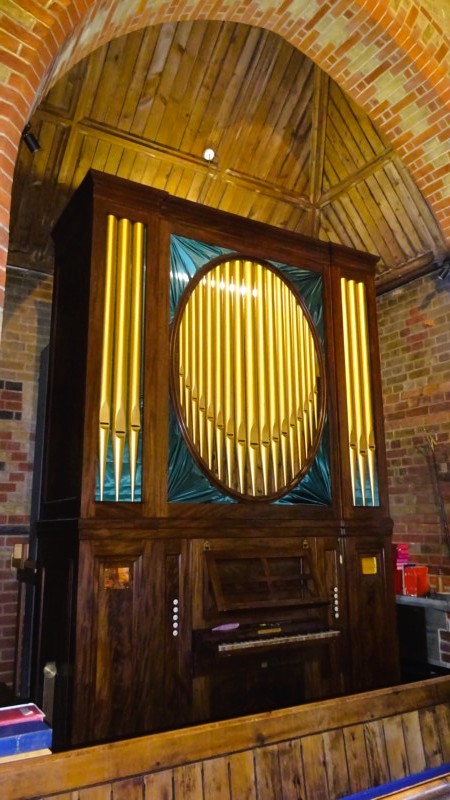
Organ restored by James Richardson Jones. Paid for from the Organ Fund collected by the church Choir over many years, and from individual donations.
Mrs Rebekah Wright -Head Teacher
This is the story, not just of the church and the school, but of the many people who have loved and cared for them over the years.
We thank God for them.